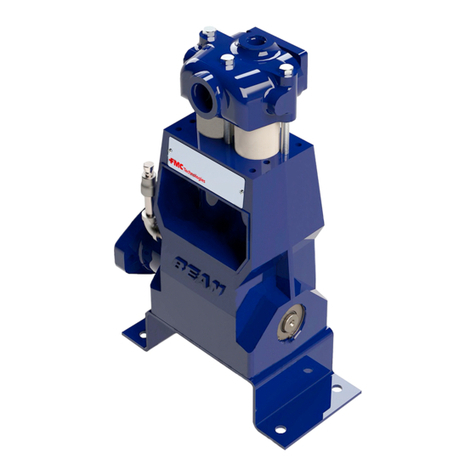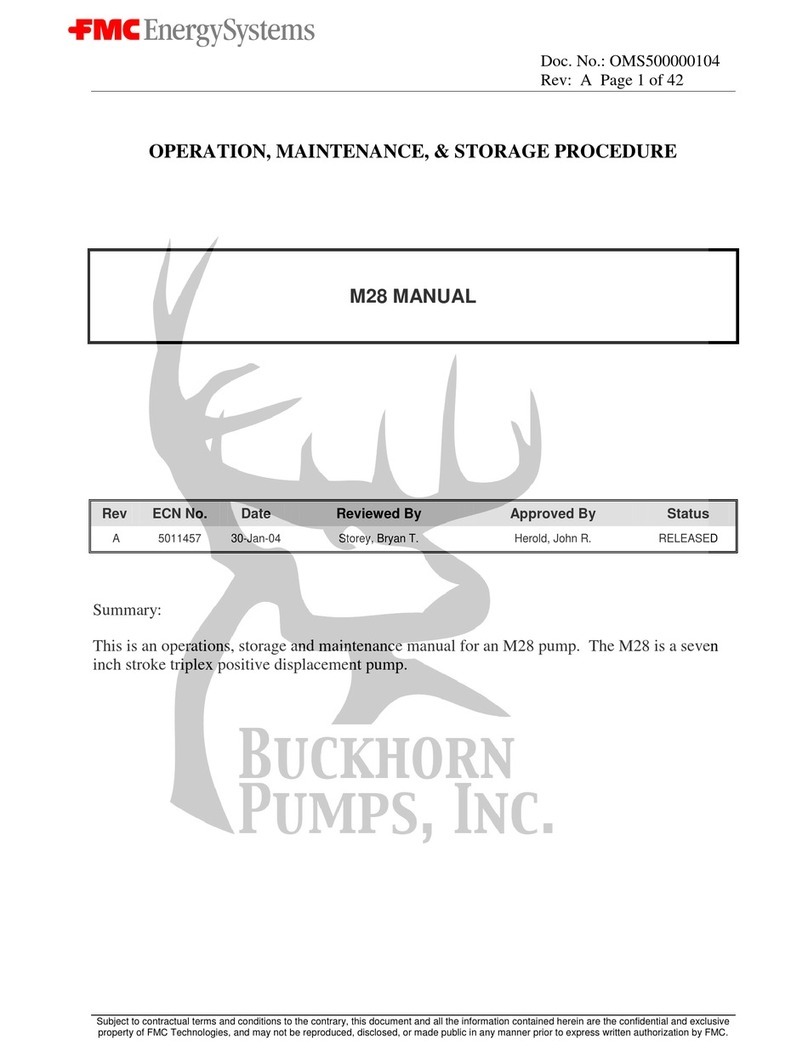
FMC M12-HD OPERATION AND MAINTENANCE MANUAL
5
Storage Requirements
FMC pumps come from the factory prepared for storage periods of up to six (6) months in proper
environmental conditions. Indoor storage in a dry, temperature-controlled location is always
recommended. If pumps are to be stored short term (less than six (6) months) in a severe
environment, they should be prepared using the procedures outlined in the “Short Term Storage
For Severe Environments” section below. If the pump is to be stored, or is inactive, for periods in
excess of six (6) months, it is necessary to prepare the pump as outlined in the “Long Term
Storage” section
Short Term Storage
If the pump is stored in an indoor, temperature controlled environment for less than six (6) months,
no special steps are required to prepare it for storage. As a general rule, pumps in corrosive fluid
applications should drain fluid end, flush with water or other suitable rust preventative, and blow dry
using compressed air whenever idle for periods in excess of one (1) week.
Short Term Storage for Severe Environments
Drain any fluid from pump and blow dry with compressed air. Spray a fog of preservative oil into
suction and discharge ports of fluid end, then install pipe plugs in openings. Remove the oil fill cap
(or plug) and the power end breather vent. Spray a heavy fog of preservative oil into the oil fill hole
until it can be seen coming out of the breather opening. Coat all exposed, unpainted metal
surfaces (ex. Driveshaft) with a preservative oil. Replace the oil fill cap and breather vent, then
cover the entire pump with a weather resistant covering such as a canvas or plastic tarp.
Long Term Storage
Long-term storage is defined as any period when the pump is in storage or idle for periods in
excess of six (6) months. Remove the piston cup seals and store them in a separate location with
a controlled environment where they are protected from UV exposure. If the pump has been in
service, flush the fluid end with water to clean out any of the remaining pumpage, then blow the
fluid end dry using compressed air.
Drain any remaining oil from the pump power end, then remove the power end cover to expose the
drive components. Spray all internal parts with a rust preservative that is soluble in lubricating oil
while rotating the driveshaft several turns by hand to insure complete coverage. Replace the power
end cover and add a concentrated internal rust inhibitor per manufacturers recommendations.
Spray a rust preventative onto all exterior machined surfaces paying careful attention to any
unpainted areas like the crankshaft extension. Remove the power end breather cap and store with
the piston cup seals. Cap the breather opening with a plug or other suitable means in order to keep
the preservative atmosphere sealed inside the power frame.
Never store the pump on the floor or ground. Always place it on a shelf or pallet that is several
inches above ground level. Cover the entire pump with a canvas or plastic tarp. Periodically
inspect the unit and rotate the crankshaft by hand several turns during each inspection. Drain and
replace the rust inhibitor after every six (6) months of storage.
Before operating the pump, drain the preservative and lubricating oil mixture from the power end.
Reinstall the drain plug, breather/filler cap, piston cup seals, and any other components that were
























